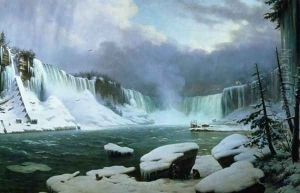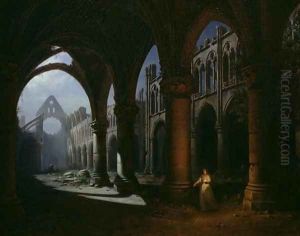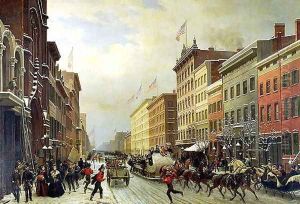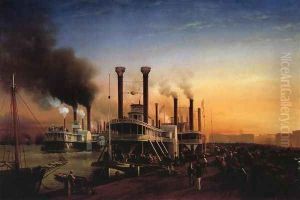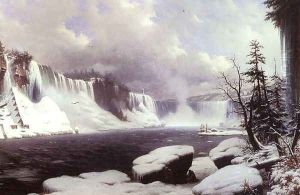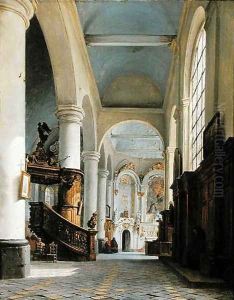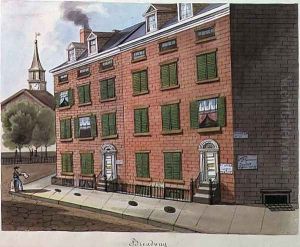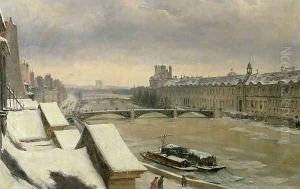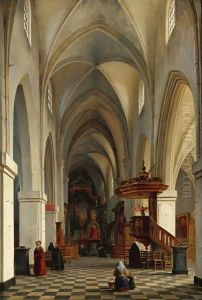Hyppolyte Victor Valentin Sebron Paintings
Hyppolyte Victor Valentin Sebron was a French artist born on August 21, 1801, in Caen, France. He was trained at the École des Beaux-Arts in Paris and was primarily known for his work as a landscape and architectural painter. Sebron developed a keen interest in depicting urban scenes and architectural landmarks, which became a defining feature of his work.
During the early years of his career, Sebron was influenced by the Romantic movement, which was prevalent in the early 19th century. However, he gradually shifted towards a more realistic portrayal of his subjects. One of the highlights of his career was his time spent in the United States, where he moved in 1849. There, Sebron captured the rapidly growing urban landscapes, including a famous depiction of Broadway in New York City. His work from this period is notable for its detailed representation of the architecture and the bustling life of American cities.
Sebron returned to France in 1855 and continued to work and exhibit his paintings. He took part in the Paris Salon, an official art exhibition of the Académie des Beaux-Arts in Paris, where he achieved recognition for his artistic talents. His American scenes, in particular, were well-received and contributed to his popularity.
Throughout his life, Sebron was also involved in theatrical set design, which influenced his approach to composition and perspective in painting. His ability to create depth and drama in his urban landscapes can be partly attributed to his experience in stage design.
Sebron's work is characterized by precise detail, vibrant colors, and a masterful handling of light and shadow, qualities that have earned him a place in art history as a skilled painter of urban and architectural scenes. His paintings can be found in various art collections and museums around the world.
Hyppolyte Victor Valentin Sebron passed away on October 21, 1879, in Paris. His legacy lives on through his contributions to 19th-century landscape and architectural painting, and he is remembered as an artist who captured the essence of the urban environment during a time of great change and modernization.
